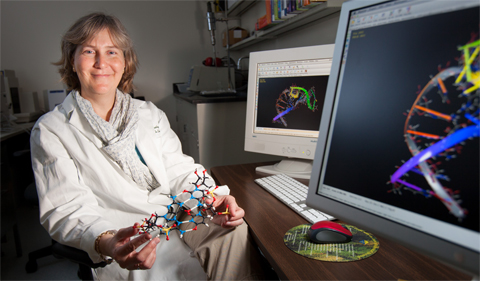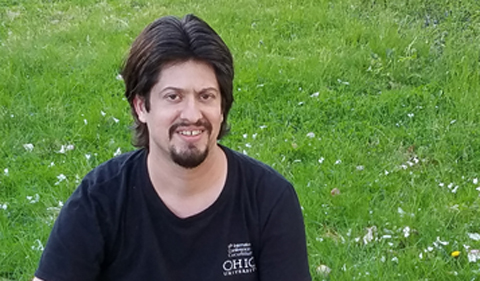Excerpted from Ohio University News
Several Ohio University researchers have received permission for an early return to their labs to conduct research on potential treatments for COVID-19.
Three research labs in the Chemistry & Biochemistry Department in the College of Arts and Sciences are using other funding sources and the expertise of their faculty, student and staff research teams to investigate other possible ways to combat COVID-19.
Dr. Shiyong Wu, who serves as director of the Edison Biotechnology Institute, and his team are examining whether a particular bacterium could be used to neutralize the coronavirus. The parasitic bacterium protects people from infectious pathogens, he explained, and can survive in various microenvironments found within the human body. The Wu team will determine if they can embed the peptides that COVID-19 seeks to attach to in the human body within the bacterium. This could allow the bacterium to intercept the virus before it can spread further through the body.
“We know what coronavirus targets — we know the receptor it attacks on human cells,” he said.
The team — which includes graduate students, a postdoctoral fellow and staff scientists — will spend the summer months studying whether the concept works. If the idea shows promise, the researchers can ask an external lab to perform toxicology tests. Wu, who will use funds from the Konneker Research Endowment for the project, also has submitted a proposal to a funding program designed to support COVID-19 research.
Dr. Eric Masson asked to return to his lab after reading about possible synergies between the COVID-19 virus and the Cucurbituril family of molecules that he has long studied. Cucurbiturils are hollow, pumpkin-shaped molecules that are of interest to scientists because of their potential applications, ranging from drug development to material science.
“A motif in one of the key proteins involved in coronavirus replication matches a motif that binds to our Cucurbituril-based systems. It was luck,” he said.
Masson’s team used modeling software to test how the shape of that coronavirus protein may interface with his Cucurbituril-based system, a pair of platinum complexes secured together by the large pumpkin-shaped macrocycle. It really fits “like a lock and a key,” he said, which gave the researchers encouragement that their system might bind to the protein and interrupt the replication of the virus.
Masson’s team now is heading back into the lab to conduct experiments to show how well their system can bind to a protein similar to the one produced by COVID-19.
While the new project draws on some existing expertise and skills of the team — which includes graduate students, a postdoctoral fellow and a visiting scholar — it also will allow them to branch out into new scientific techniques, Masson noted. Masson previously was awarded two grants from the National Science Foundation and two grants from the American Chemical Society Petroleum Research Fund to study some fundamental properties of the Cucurbituril family, and that has laid a solid foundation for the new COVID-19 experiments. Masson also will draw on Research Incentive funds and apply for additional grants.

Jennifer Hines, Ph.D., professor of chemistry and biochemistry at Ohio University, is studying RNA riboswitches as a possible new approach to kiling harmful bacteria.
A new COVID-19 research project led by Dr. Jennifer V. Hines was inspired by an online tutorial she led for two Honors Tutorial College students earlier this spring. She received a grant from the Ohio Supercomputer Center to allow the students to use software to study how new drugs are developed — using the coronavirus as the example. After observing their initial results, she got permission to continue to use the center’s resources to conduct more targeted research on the subject.
“We will investigate whether existing, FDA-approved drugs can bind and disrupt an RNA structural element found in SARS-COV-2, the virus that causes COVID-19,” Hines said. “If so, these drugs potentially could be rapidly repurposed for the treatment of the disease. Other researchers have investigated drug repurposing for targeting viral proteins, but very few are looking at viral RNA.”
A team of graduate and undergraduate students, including the two HTC students involved in the spring tutorial, will plan and analyze experiments remotely. The graduate students will conduct the work in the lab.
In addition to studying FDA-approved drugs this summer, Hines hopes that her team also can design novel synthetic compounds that could help researchers develop a new drug that can target COVID-19’s viral RNA.
Read more at “OHIO researchers returning to labs to research potential COVID-19 treatments.”




















Comments